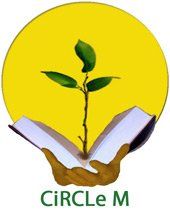A Legacy of Resilience and Celebration – by Joyce Sasse
A Legacy of Resilience and Celebration – by Joyce Sasse
(During these Covid-19 Days our spirits find renewal as we recall reminiscences from the Life & Legacy of Annora Brown .)
A pivotal part of Annora Brown’s story starts in 1930. She had just graduated from the Ontario Art School and was developing the Art Program for Mount Royal College (Calgary) when her father called her home to Fort Macleod. Her mother had suffered a stroke. Annora’s help was needed.
“The shock of mother’s illness, the bitterness of business men struggling to keep their heads above water, and the procession of desperate people begging for aid which could not be given” was all too real. When Annora realized the extent of her obligations” (no old age pension, no medicare, no pharma care, no Pioneer Lodge for older people) she felt an overwhelming melancholy.
Her autobiography “Sketches from Life” tells her story. In spite of everything, she had to live a life. “I had no intentions of starving” she wrote. “I would try every means possible of turning my talents into enough money for food and shelter without denying myself the right to exist.”
She remembered how it was she found solace and healing. “Outdoors activities and new impressions from the world of nature dulled the sharp edge of my grief. The human spirit ripens more slowly than the berries on a bush, but I moved forward toward maturity.”
So it was that Annora “cobbled together a living as an artist.” In addition to painting, she illustrated books and magazines, and held art classes and lectures in numerous south Alberta communities. MaryBeth Lavioulette noted “Annora was one of the lucky few in the province to earn a living from her art.”
She met herself on the prairie with the wailing wind, the honking geese and howling coyotes. She wrote about having an elemental response to the hugeness and violence of the wind. She felt for the defiant robin singing out after a spring snow storm. Nothing was more tempting than her need to sketch grain elevators reflected in puddles while clouds churned and thunder echoed in the distance.
At a time when the Federal Government focused on assimilation of Native People, Annora studied her Blackfoot neighbours. Their sense of spirituality and connection with the earth was something she deeply appreciated. She studied the designs found in their clothing, their tipis and their dances. Through her illustrations in Dent’s school textbooks she helped interpret Native culture for non-Native students. She did the same by writing and illustrating stories in women’s magazines.
Also, from early on Annora familiarized herself with everything she could learn about wild plants (see her book “Old Man’s Garden”). She then experimented with the unique water colours and design techniques for painting these plants. In three years she completed 500 watercoloured wildflower paintings. All of them were portrayed in their natural state. 200 were commissioned for the Glenbow Foundation (Calgary). The rest here purchased by an appreciative public.
Obviously, nature’s rich personality captivated her. It was at the heart of everything she did.
Annora Brown was a quiet, introverted, home-grown artist who, with pen and paint brush preserved vital secrets otherwise unheralded in today’s world. More than a legacy of resilience, she taught us the meaning behind celebrating the gifts of Nature!
We can learn so much by seeing the updated website www.annorabrown.ca. Also, enjoy “Annora Brown: Interpreter of the Foothills” on YouTube.
